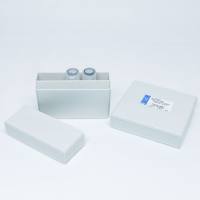Site-Directed Mutagenesis of Antibody-Variable Regions
互联网
2883
Introduction of mutations in antibody combining sites provides a powerful means to assess the functional role of individual residues and segments of the combining sites in interactions with antigen. Once cloned antibody fragments are available, several methods can be utilized to introduce mutations. Commonly used methods include those of Kunkel et al. (1 ) involving the use of a uracil-labeled template, and Kramer and Fritz (2 ) in which gapped duplex DNA is used to construct oligonucleotide-directed mutants. Several polymerase chain reaction-based mutagenesis techniques have been described (3 –5 ). However, available thermostable polymerases are error-prone, leading to undesired sequence changes. For example, Taq polymerase has an average error rate of 0.8% (6 ,7 ). In this chapter, we described an efficient method for mutagenesis of cloned antibody fragments in which mutant oligonucleotides are utilized to initiate the synthesis of a phosphorothioate nucleotide containing DNA strands using single-stranded phage or phagemid DNA as template. The original strand is removed by exonuclease digestion, the nonmutant strand is nicked with a restriction enzyme, gapped with exonuclease III, and mutant double-stranded DNA is generated using polymerase and ligase enzymes (8 –10 ). The method has been applied to generate point mutations and deletion mutations in an anti-VIP light (L) chain in the example described here. Insertion mutations can also be performed using appropriate oligonucleotides. In addition, oligonucleotides synthesized using mixtures of nucleotide phosphoramidites in individual cycles can be used to produce libraries of random mutants. A major advantage of this approach is the high mutation efficiency. pCANTAB5his6 , a phagemid vector derived from pUC119, was used in the present example. In principle, any M13 vector can be employed. An easy-to-use kit with excellent instructions is supplied by Amersham (Sculptor). In combination with appropriate strategies to select mutant clones (see Tramontano, Chapter 16 , and Huang et al., Chapter 27 ), new constructs can be prepared rapidly and clones with the desired activity isolated.








